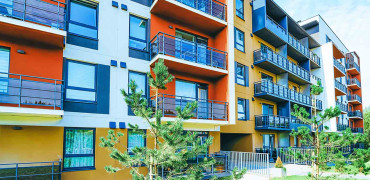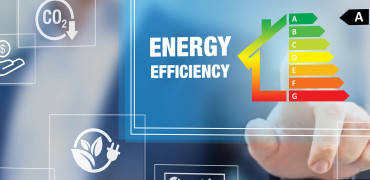As our lives become increasingly digital, data centres are at the core of everything we do, from commerce and education to entertainment.
But they're also significant energy users, under mounting pressure to reduce their carbon emissions and optimise energy efficiency.
The challenge is acute: the average Power Usage Effectiveness (PUE) of data centres, a measure of their energy efficiency, is reaching its practical limits. As the 2022 global survey by the Uptime Institute reveals, progress in energy efficiency is slowing.
Data centres have a significant role to play in the transition to a low-carbon future
Responsible neighbours
Yet worldwide, governments are putting more pressure on data centre developers to be responsible neighbours - to limit their energy use and be part of sustainable solutions, rather than an environmental burden.
For example, Europe’s Energy Efficiency Directive mandates disclosure of energy performance for data centres of a specific size. It also sets targets for climate neutrality by 2030.
Germany leads in legislative action, setting stringent PUE targets for data centres. This push towards efficiency is a regulatory demand and client expectation.
Data centre clients are increasingly conscious of the carbon footprint associated with their data usage, seeking providers with solid low-carbon credentials.
A source of useful heat
However, the solution lies beyond optimising existing cooling technologies. A paradigm shift is emerging in which data centres become sources of heat energy.
This approach, already successful in northern Europe, involves capturing waste heat from data centres for other buildings or wider heat networks.
It’s an innovative approach that aligns with the UK government’s Heat and Buildings Strategy to reduce our reliance on fossil fuels for heat - about 40% of UK carbon emissions come from building heating systems.
The Strategy identifies heat pumps and heat networks as crucial to decarbonising building heat. The technology already exists to make use of data centre waste heat and internationally, the use of heat pump technology for heat reuse is already successful.
In Finland, Fortum uses waste heat from an Ericsson data centre to supply a heat network, transforming the data centre into a heat production plant. Similarly, in Tallaght, Ireland, waste heat from a data centre supplies a local district heating network, reducing carbon emissions significantly.
Immense UK potential
The potential of data centres to contribute to the UK’s low-carbon heat future is immense but underutilised.
Our history with heat networks is limited, but changes are afoot. The recently introduced Energy Act removes barriers to developing new heat networks and encourages the use of low-carbon heat sources, including waste heat from data centres.
London, dominating the UK’s data centre sector, incorporates heat from waste sources in its district heating plans. The London Plan 2021 emphasises the use of waste heat and sets ambitious carbon reduction targets for new building projects.
Other UK cities with burgeoning data centre sectors, like Manchester, Leeds, and Cardiff, are aligning with government Opportunity Areas for district heating networks.
Early design is crucial
Early design and specification stages are crucial when considering heat reuse in data centres. The European Code of Conduct for Energy Efficiency in Data Centres provides a framework, assigning qualitative values to actions based on the benefit level and priority. These guidelines help data centre developers make informed decisions about heat recovery from the outset.
The path to a low-carbon future is multifaceted, and data centres have a significant role to play in this transition.
Working with experienced partners in this area is important, and here at Mitsubishi Electric we have been applying this know-how for many years across the EU. Using available technologies, we can harness waste heat and make data centres part of the UK's sustainable future.
Find out more about this topic in our new publication: Data centres: Heat reuse for a low carbon heat future - A guide from Mitsubishi Electric
Shahid Rahman is EMEA – Data Centre Strategic Account Lead (Engineered IT Cooling Solutions)




